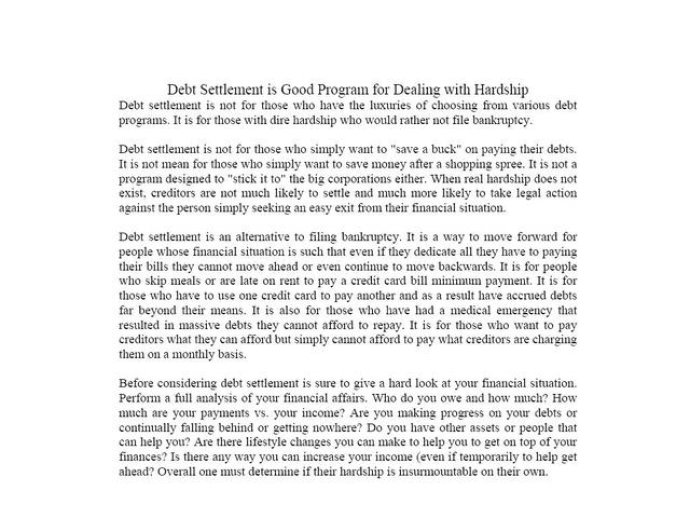Debt settlement caters to individuals facing substantial financial distress who want to avoid bankruptcy, unlike other debt programs.

In order to qualify for debt settlement, real hardship must exist. Creditors are much more likely to settle with individuals who are experiencing true hardship than those who are simply looking for an easy way out of their financial situation. Debt settlement is an alternative to bankruptcy and can be used to move forward for individuals who are unable to make progress on their bills despite their best efforts.
Debt settlement may be a good fit for individuals who are skipping meals, paying their minimum credit card payments late, or using one credit card to pay off another. It is also often used by those who have incurred massive debts due to medical emergencies. Debt settlement allows these individuals to pay what they can afford while avoiding bankruptcy.
Before considering debt settlement, it is important to perform a full analysis of your financial affairs. This means taking a hard look at who you owe, how much you owe, and how much you are paying versus your income. It is also important to consider whether you are making progress on your debts or falling behind. Additionally, you should consider if there are other assets or people who can help you, if there are lifestyle changes you can make to improve your finances, and if there are any temporary ways to increase your income.
Overall, debt settlement should be considered only when your hardship is insurmountable on your own. If you conclude that there is no way to move forward without assistance, debt settlement may be a good option to consider.
Version 1.0: N/A